I’m in Okinawa.
We’re driving to a secret spot, located in Nago, two hours from Shuri Castle.
Suddenly, we steer away from the highway.
We are driving in small alleys, jungle surrounding us on both sides, and houses are rare in this area. I think I saw three. People are obviously not used to foreigners in cars either, because they look pretty surprised.
The road is becoming more narrow.
Up, up, up a big slope. More dense jungle.
I have my hand on the door, ready to bust it open and throw myself out stuntman style if the car starts to roll backwards.
(Yes, I watch too many action movies.)
STOP THE CAR!
“What?”
Don’t tell me you don’t see it.
Really?
You don’t see one of the best kept secret places in Okinawan Karate history (approximately three people have been to this place) hidden in the vegetation?
Look closer.
I’ll help you.
Yeah.
That’s right.
A small stone pillar.
(“wow… was that an anti-climax or what?”)
This is really nerdy stuff. It’s hard to make an old stone pillar sound cool. Most people have no interest in this.
But I do. And you should too.
You see, that’s the stone pillar marking the secret hideout of legendary Karate pioneer (and all-around folk hero) Kousaku Matsumora (1829-1898) – one of the principal teachers of masters like Kyan Chotoku, Choki Motobu et al, who held the noble rank of “chikudon peichin”. He is responsible for passing on the foundations for many of our most popular kata of today, including Chinto/Gankaku, Passai/Bassai, Wansu/Empi, Naihanchin/Tekki, Rohai/Meikyo, Wankan etc…
I visited his public stone monument in Tomari before (conveniently located in the middle of a playground!).
But this was anything but public.
We stepped out of the car.
My local undercover contact had first heard about this place from one of his acupuncture patients, who originally comes from this area of Nago. He had told him that when he was a small kid, they used to play around here, and he remembered the stone because it had the words “bushi” (“warrior”) inscribed in it.
“Bushi” Matsumora Kosaku.
He thought it might be interesting.
Immediately, my undercover contact called me (this was last week!), and up until today; only me, my secret Okinawan ninja spy, and that old man knew about the significance of this place.
And now… you!
Soon, however, I have a feeling that every historian/researcher in Okinawa will be searching frantically for this place (remember where you saw it first!), wanting to document it in their works.
Well, let’s spare them the trip, shall we?
Here’s a close-up:
Put that in your fancy history books! HA!
So, why is this Kosaku Matsumora stone pillar here in the middle of nowehere?
Well, the story goes something like this…
At the age of 20, already an accomplished Tomari-te martial artist, Matsumora stole a sword out of the hands of an angry Satsuma overlord using only a “wet towel” as a weapon (at least that’s what the legend says). Matsumora hit the samurai with the wet towel and managed to grab the sword, which is pretty insulting to a samurai.
In the process, Matsumora apparently lost a thumb. He threw the thumb and he sword in the nearby Asato River (!), and then fled to Nago. Another story says that he simply killed the samurai, and therefore had to escape. But I guess some stories should be kept secret (who wants to trace her lineage to a killer?!).
This event led Matsumora to become a folk-hero over night, as well as a sought after criminal by the Japanese rulers.
So, to Nago he fled – and stayed here for 3-4 years.
Actually, this story of Matsumora killing a samurai is very famous in Okinawan folklore, and is retold in musicals and theater performances everywhere.
The locals in Nago were of course very honored by this visitor, and promised to remain silent of his whereabouts to the authorities. After he went back to Tomari, they erected this small stone monument to remember the noble visitor who once live there.
Yup.
Matsumora’s house was actually right here, to the left:
Obviously, it is a pretty overgrown place, but if our calculations are right, it should be right there (opposite to the stone pillar, which is on the right of the road). Behind the bushes and trees the ground is perfectly even.
In Japanese, this is referred to as the Matsumora yashiki (“yashiki” means something like residence/estate/grounds).
BOOM!
And there you have it.
From one Karate Nerd to another.
Greetings from Okinawa! 🙂
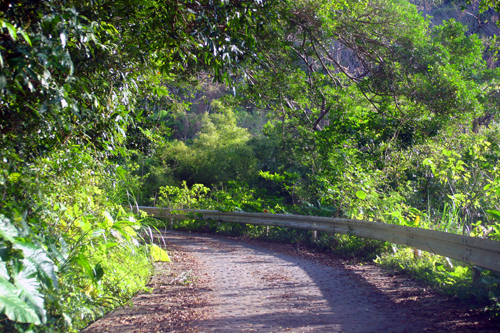
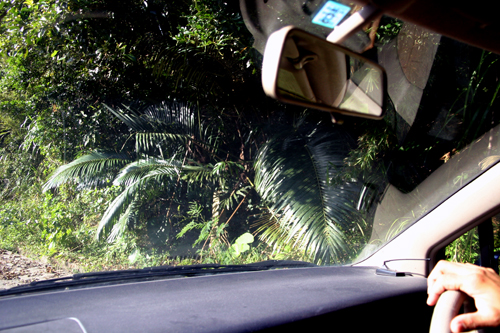
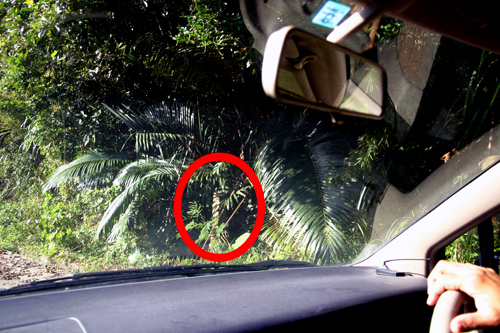
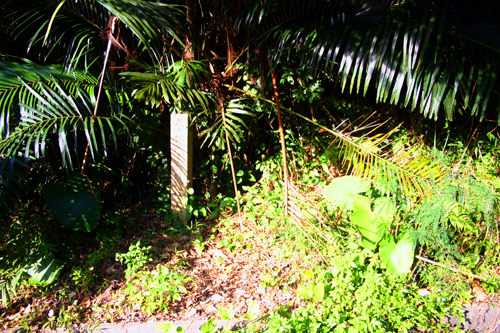
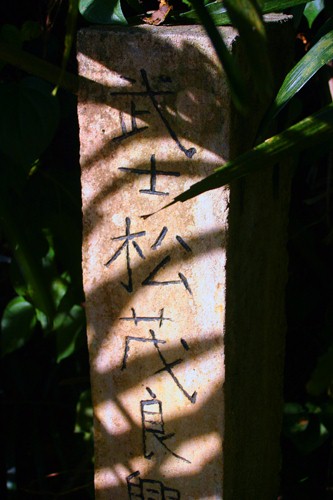
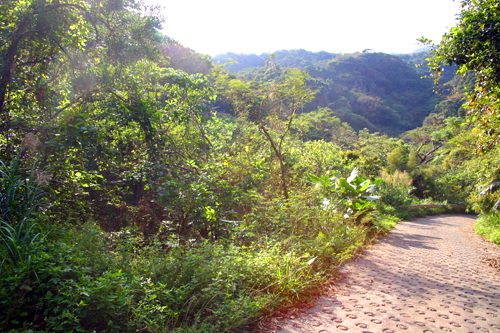


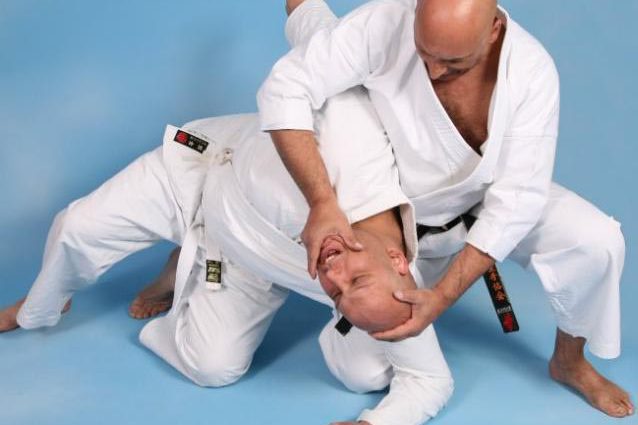
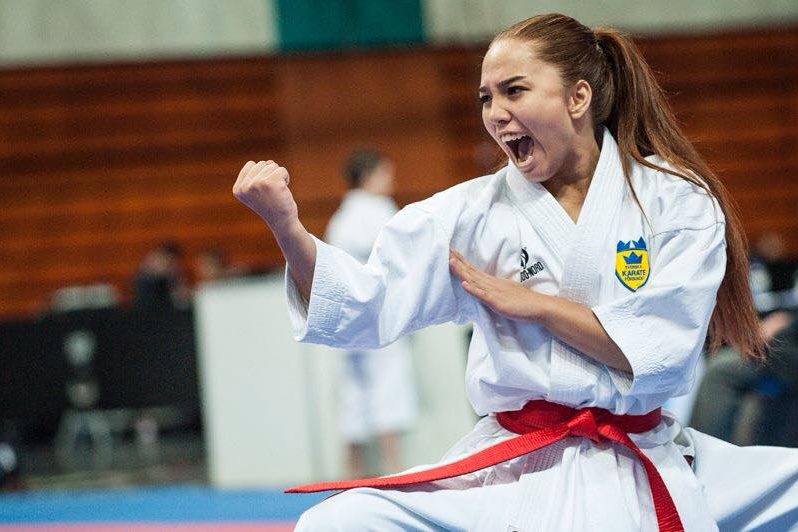
8 Comments